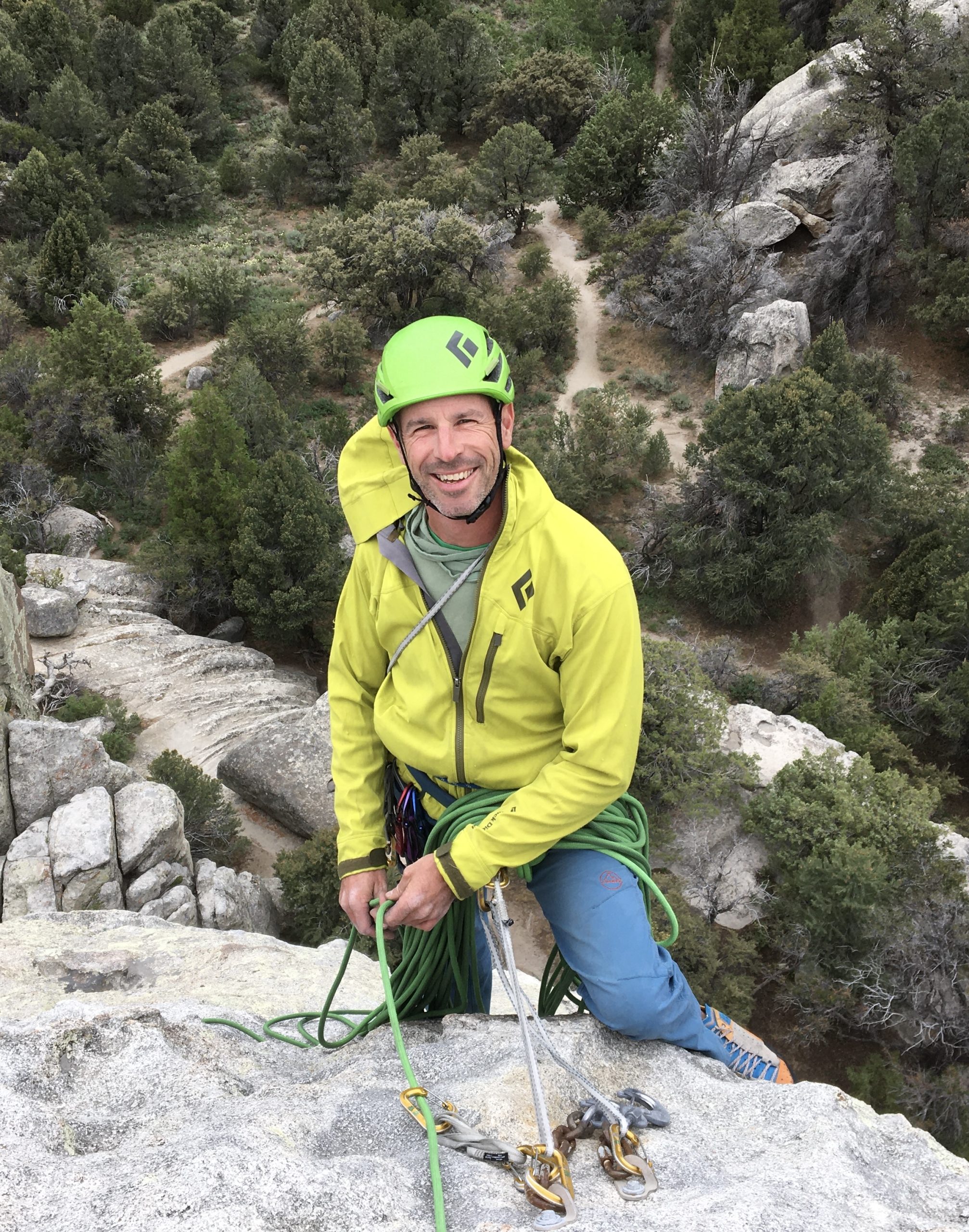Some information may be outdated.
Science Moab is diving into the research and advocacy in the Indian Creek area outside of Moab. Here, Science Moab speaks with Ty Tyler, stewardship director of rock climbing advocacy organization The Access Fund, about their recent survey of Indian Creek climbers and the launch of their climber steward program in the renowned climbing hub.
Science Moab: Today, one in five climbing areas in the United States is threatened. What does “threatened” mean here?
Tyler: It’s a pretty broad definition. For one, there are many climbing areas on private land, which could present a threat to access. There are also public-land access threats: extractive industries may destroy an entire climbing resource. There’s the threat of sustainability related to impacts, whether it’s human waste concerns, erosion, plant loss, or species conflicts. There are very few climbing areas that are well stewarded, well set up, ready to handle masses in the future, with happy landowners or land managers.
Science Moab: How does The Access Fund work with these threatened areas?
Tyler: We work alongside advocates and different climbing communities on whatever needs they have. We have several program areas: stewardship and conservation, which is what I’m responsible for; policy and advocacy; land conservation and acquisition; and a host of educational programs for our local advocate community and climbers in general.
Science Moab: This year, you worked with the University of Utah to survey climbers who use Indian Creek. What were the big takeaways from that survey?
Tyler: One that stood out is that climbers in Indian Creek were actually really craving education. They’re out there in a pretty open landscape without much signage or information. It was wonderful to see that people were craving some education on the Indigenous history of the area, land management boundaries and policies, raptor issues, and cultural-resource protection.
People were also really concerned about the sensitive environment of Indian Creek, and how growing use is starting to impact that sensitive environment — whether it’s from dispersed camping, accessing climbing areas, or visiting cultural resource sites.
Another one that was really interesting was that a lot of the survey results pointed toward climbers that were more seasoned, but new to Indian Creek. It’s not really a beginner area; it’s an area that you kind of grow up into. Sometimes we think it’s just a lot of new climbers who don’t know the rules and regulations. It turns out it’s seasoned climbers who are just not familiar with the place.
Science Moab: This fall, you’re piloting a stewardship program at Indian Creek. What will that look like?
Tyler: The climber steward program we’re launching in Indian Creek this fall is based on a model from Yosemite National Park. Stewards are going to live in one of the two Bureau of Land Management campsites down in the Creek for about ten weeks each season. Their duties will include climber coffees, where they’ll offer free coffee in the morning as an opportunity to make connections, provide education, and talk to climbers about their plans. We’ll also have the BLM and the Dugout Ranch give talks about their work.
The stewards will also go to different climbing areas and dispersed campsites and talk to folks about their practices. They’ll also support resource monitoring with the BLM.
The program is focused on making connections with visitors and sharing best practices for minimum-impact behaviors. This fall, we’ll start seeing them on a pretty consistent basis. They’re not there for enforcement. They’re not there to tell people what they’re doing wrong. It’s really about education and getting people to make a connection to the place. And I think Indian Creek is the perfect place to do it.
Science Moab: What are some of the changes you’ve seen from other stewardship programs?
Tyler: There’s been a better connection between climber and place. You can see the spark in visiting climbers for something besides climbing. It drives that connection so they become supporters of the place and want to protect it even more. Climbers have a long history of being good stewards; since our early beginnings as a community, we’ve always done volunteer days to show land managers that this is our place, and we want to help take care of it. I think that that ethos is growing in the community.
Science Moab is a nonprofit dedicated to engaging community members and visitors with the science happening in Southeast Utah and the Colorado Plateau. To learn more and listen to the rest of Ty Tyler’s interview, visit www.sciencemoab.org/radio. This interview has been edited for clarity.
Appreciate the coverage? Help keep local news alive.
Chip in to support the Moab Sun News.





